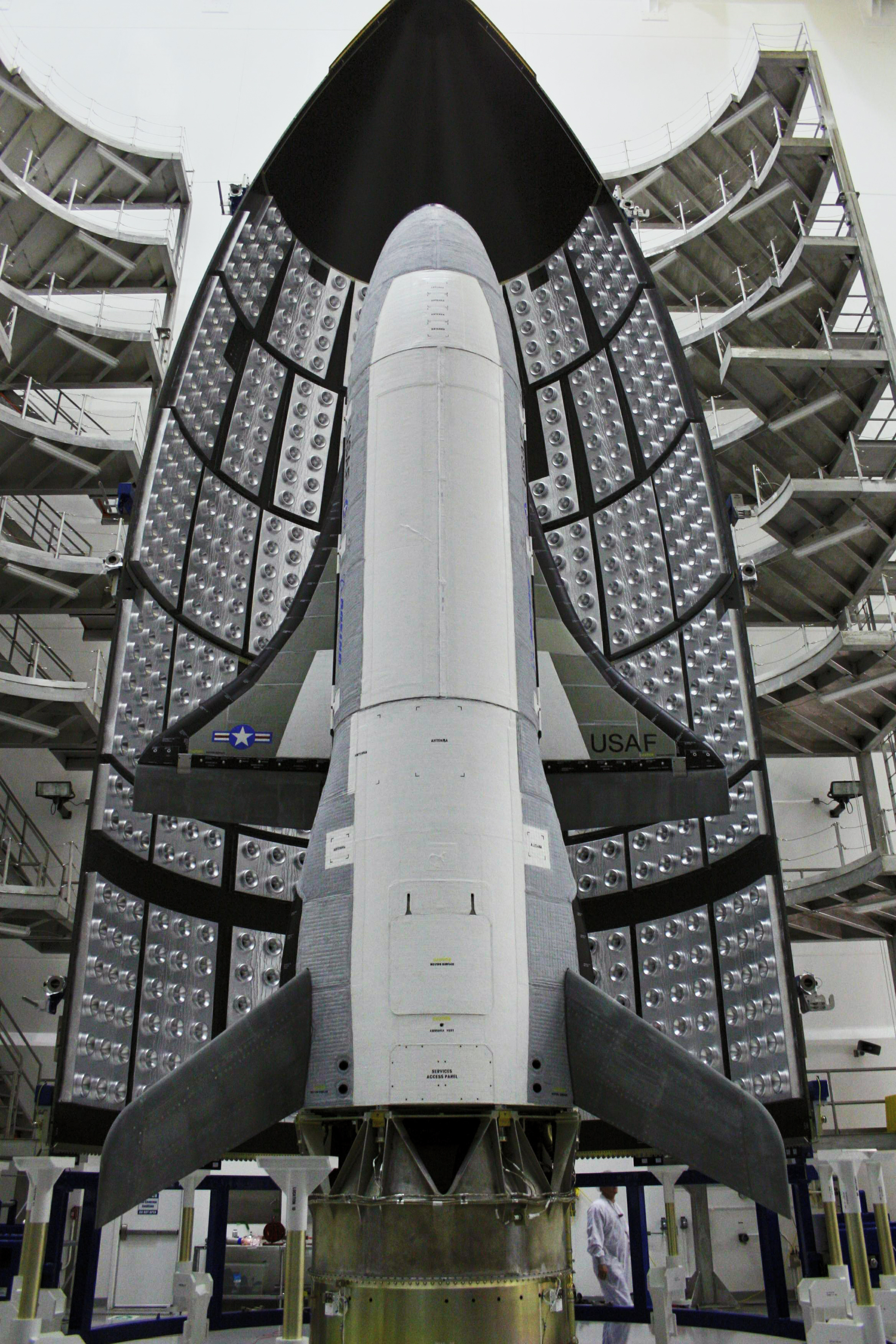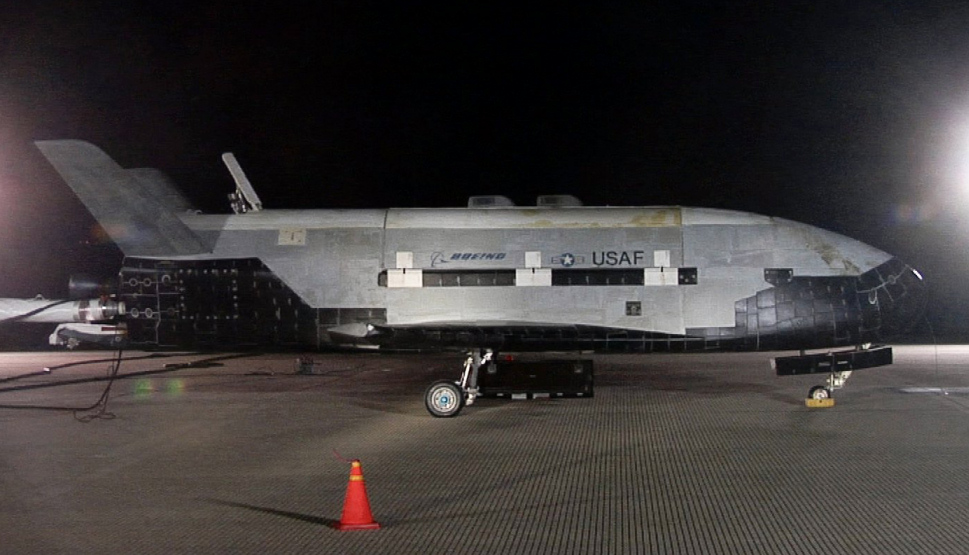X-37CIn 2011, Boeing announced plans for a scaled-up variant of the X-37B, referring to the spacecraft as the X-37C. The size of the X-37C would be approximately 165 to 180% of the X-37B, allowing it to transport up to six astronauts inside a pressurized compartment housed in the cargo bay. The X-37C's proposed launch vehicle is the Atlas V Evolved Expendable Launch Vehicle.[54] X-37C may compete with Boeing's CST-100 commercial space capsule.[55]
Secretive X-37B US Space Plane Could Evolve to Carry Astronauts | Space Planes & Human Spaceflight | Air Force X-37B Program & X-37C Space Plane Designs | Space.com
X-37C: New space plane for astronauts
No new technology is required to build an X-37B customized to the space station cargo mission, Grantz said. The next step, he said, is a larger vehicle with significant cargo return capabilities for ISS Line Replaceable Units (LRU’s) and experiments requiring a low acceleration return to Earth.[Infographic: Inside the X-37B Space Plane]
Grantz explained that a variety of scaled-up versions of the X-37B space plane have been studied as potential vehicles to carry astronauts or cargo into low-Earth orbit. The studies include looks at transport methods for pressurized and unpressurized cargo transport to and from the space station, as well as future Bigelow space habitats or other forms of space tourism in low-Earth orbit.
The preferred size of these derivatives is approximately 165 to 180 percent of the current X-37B.
The larger X-37C has been blueprinted, sized to support around five to six astronauts with provisions for one that is injured and requires a stretcher.
According to designs in Grantz's paper for the Space 2011 conference, crew-carrying portion of a future X-37C type space vehicle would fly in a pressurized compartment that would fit into the payload bay of the spacecraft. The seats would be arranged along one side of the spacecraft to allow room for moving through the spacecraft in orbit and to provide the crew access to seats on the launch pad.
A hatch in the main body would be used to provide entry to the space plane on the ground, according to Grantz's paper.
Launched atop an Atlas Evolved Expendable Launch Vehicle, this spacecraft would be capable of rendezvous, docking, deorbiting, re-entering, and landing autonomously. But it could also include the ability of an onboard pilot to control the craft, Grantz said.
"Once qualified for human flight, these vehicles could transport a mix of astronauts and cargo to the ISS and offer a much gentler return to a runway landing for the space tourism industry," Grantz's report states.
---
The six trillion dollar question is: Is it better then the space shuttle?


